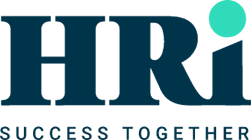Latest from HRi
Equity, Diversity, and Inclusion (EDI) is broken.
For years, organisations have championed EDI initiatives, investing in unconscious bias training, diverse hiring panels and inclusive leadership programmes. Yet, despite these efforts, neurodivergent individuals — those with autism, ADHD, dyslexia, dyspraxia and other cognitive differences — continue to be overlooked, underutilised, and misunderstood in the workplace.
Why? Because traditional EDI strategies were never designed with neurodiversity in mind.
As CEO of HR Independents (HRi), I’ve seen first-hand how independent HR professionals and businesses navigate the complex realities of workplace diversity. Too often, neurodivergent employees are treated as an afterthought in EDI discussions, bundled into generalised disability policies rather than acknowledged as a distinct and valuable workforce demographic.
It’s time for a shift. Here’s why current EDI efforts fail neurodivergent employees — and what needs to change.
1. The One-Size-Fits-All EDI Model Ignores Cognitive Differences
Most EDI programmes focus on visible diversity — race, gender and ethnicity — while neurodiversity remains largely invisible. This results in initiatives that centre around group identity rather than individual cognitive needs.
For example, many companies implement blanket policies such as:
- Encouraging more verbal collaboration and group work
- Prioritising “culture fit” in hiring
- Standardised leadership development programmes
These approaches often disadvantage neurodivergent individuals. Someone with autism might struggle with small talk in team-building exercises but excel in deep-focus tasks. A professional with ADHD may thrive in a high-energy, fast-paced role but struggle with rigid work structures. Yet, traditional EDI programmes rarely account for these differences.
What Needs to Change:
- Shift from Identity-Driven Inclusion to Needs-Based Inclusion — Rather than viewing diversity solely through a demographic lens, organisations must adopt an individualised approach that considers cognitive differences.
- Personalised EDI Strategies — Offer flexible work models, alternative communication methods, and tailored career development paths to empower neurodivergent employees.
2. Bias in Hiring is Still a Huge Problem—And EDI Doesn’t Address It
Most EDI hiring initiatives focus on reducing racial and gender bias, but neurodivergent candidates face a completely different set of barriers that traditional strategies fail to address.
The standard interview process—which values quick thinking, social fluency and confidence —automatically disadvantages many neurodivergent applicants. Yet, rather than rethinking hiring practices, most EDI programmes simply add diverse hiring panels or unconscious bias training, which do little to remove structural barriers for neurodivergent talent.
What Needs to Change:
- Ditch the Standard Interview — Instead of panel interviews, use skills-based assessments, work trials, and job simulations to evaluate ability.
- Recruit for Strengths, Not Social Skills — Neurodivergent individuals often have unique strengths in areas like pattern recognition, problem-solving, and deep focus. Hiring should prioritise these skills rather than how well someone “performs” in an interview.
3. The “Neurodiversity as Charity” Mindset Undermines Inclusion
Many organisations approach neurodiversity from a charity perspective rather than a business strategy. They focus on accommodation rather than integration—treating neurodivergent employees as an exception to be managed rather than an asset to be leveraged.
This outdated mindset leads to:
- Token hiring initiatives that bring in neurodivergent employees without real career pathways.
- Accommodation policies that focus only on legal compliance rather than fostering true inclusion.
- Isolated programmes (such as autism hiring schemes) that don’t integrate neurodivergent talent into the broader workforce.
What Needs to Change:
- Move from Accommodation to Optimisation — Instead of seeing neurodivergent employees as requiring “special treatment”, build work environments that maximise their strengths.
- Make Neurodiversity a Core Business Strategy — Companies like JPMorgan Chase and SAP have proven that embracing neurodivergent talent drives innovation, productivity, and profitability. It’s not about charity — it’s about smart business.
4. EDI Metrics Don’t Measure Neurodivergent Success
Most organisations track EDI success through metrics like:
- Representation in leadership
- Employee engagement surveys
- Retention rates for diverse groups
But these metrics don’t capture neurodivergent inclusion. A neurodivergent employee may not feel comfortable self-identifying in an engagement survey. Retention rates may not reflect whether they are thriving or merely surviving.
What Needs to Change:
- Develop Neurodiversity-Specific EDI Metrics — Track promotion rates, performance outcomes, and employee experience for neurodivergent workers.
- Use Employee-Led Feedback Mechanisms—Instead of broad surveys, create safe spaces where neurodivergent employees can provide insights on workplace challenges without fear of stigma.
The Future of EDI Must Be Neuroinclusive
The current EDI model is failing neurodivergent professionals — not because of a lack of intention, but because it was never designed to include them.
To truly embrace diversity, organisations must go beyond traditional EDI frameworks and build workplaces that value cognitive differences as deeply as they value cultural ones.
At HR Independents (HRi), we work with HR professionals and businesses to develop inclusive, forward-thinking HR strategies that support all employees, including the neurodivergent. The future of work is not about fitting people into rigid structures — it’s about designing workplaces that work for everyone.
Neurodiversity isn’t a box to tick on an EDI checklist. It’s the key to unlocking untapped talent, driving innovation, and shaping the workplaces of the future.
Are you ready to rethink EDI?
Author: Mary Asante | HRi
